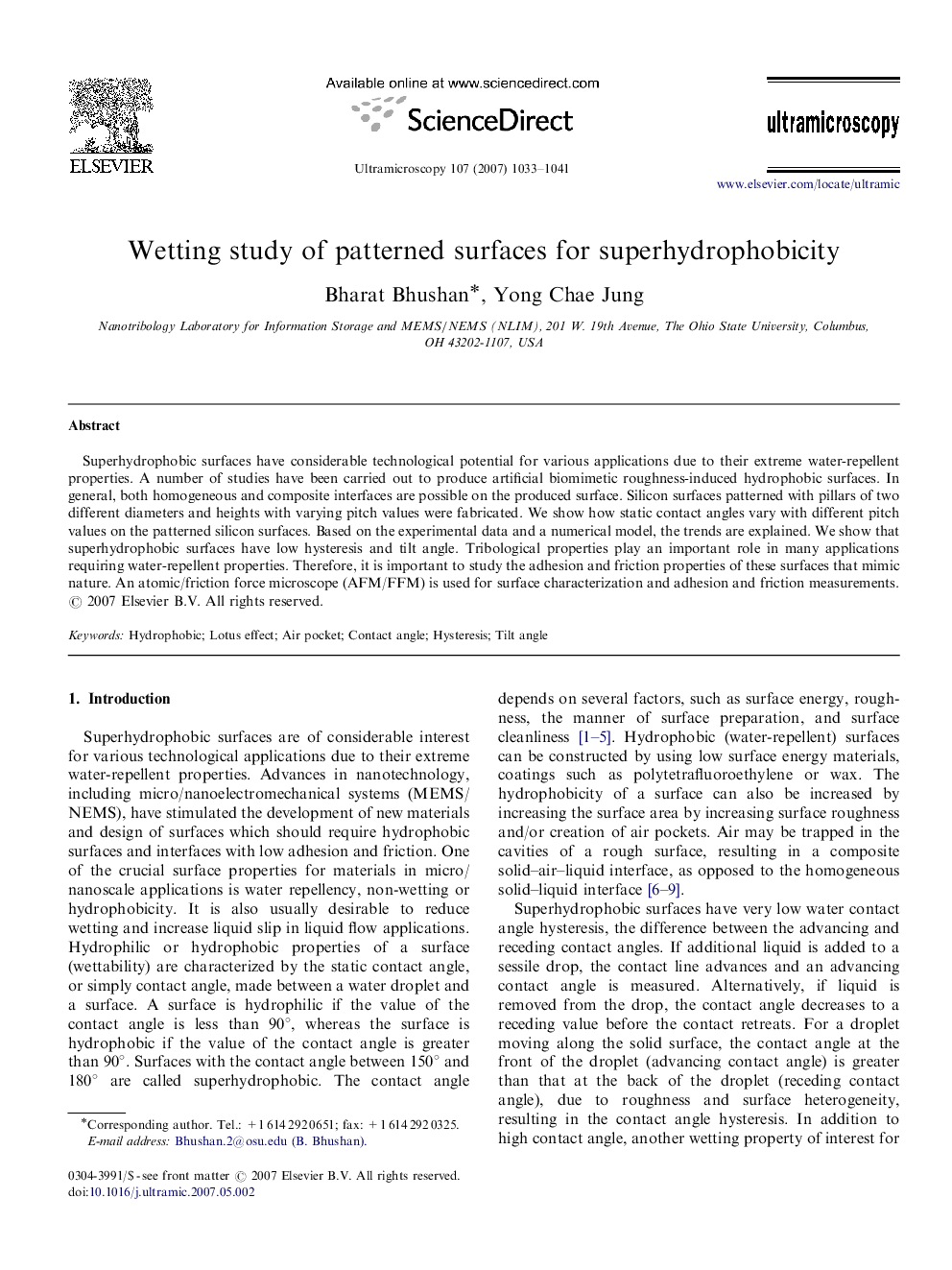| Article ID | Journal | Published Year | Pages | File Type |
|---|---|---|---|---|
| 1678827 | Ultramicroscopy | 2007 | 9 Pages |
Superhydrophobic surfaces have considerable technological potential for various applications due to their extreme water-repellent properties. A number of studies have been carried out to produce artificial biomimetic roughness-induced hydrophobic surfaces. In general, both homogeneous and composite interfaces are possible on the produced surface. Silicon surfaces patterned with pillars of two different diameters and heights with varying pitch values were fabricated. We show how static contact angles vary with different pitch values on the patterned silicon surfaces. Based on the experimental data and a numerical model, the trends are explained. We show that superhydrophobic surfaces have low hysteresis and tilt angle. Tribological properties play an important role in many applications requiring water-repellent properties. Therefore, it is important to study the adhesion and friction properties of these surfaces that mimic nature. An atomic/friction force microscope (AFM/FFM) is used for surface characterization and adhesion and friction measurements.
